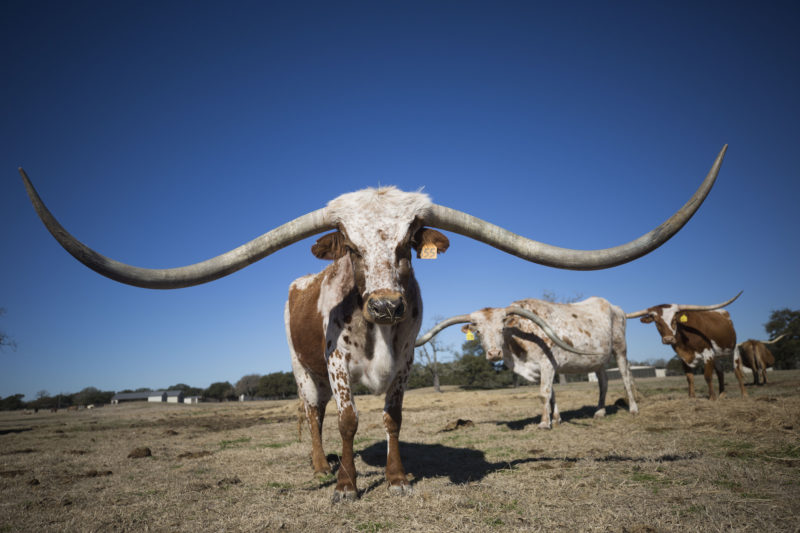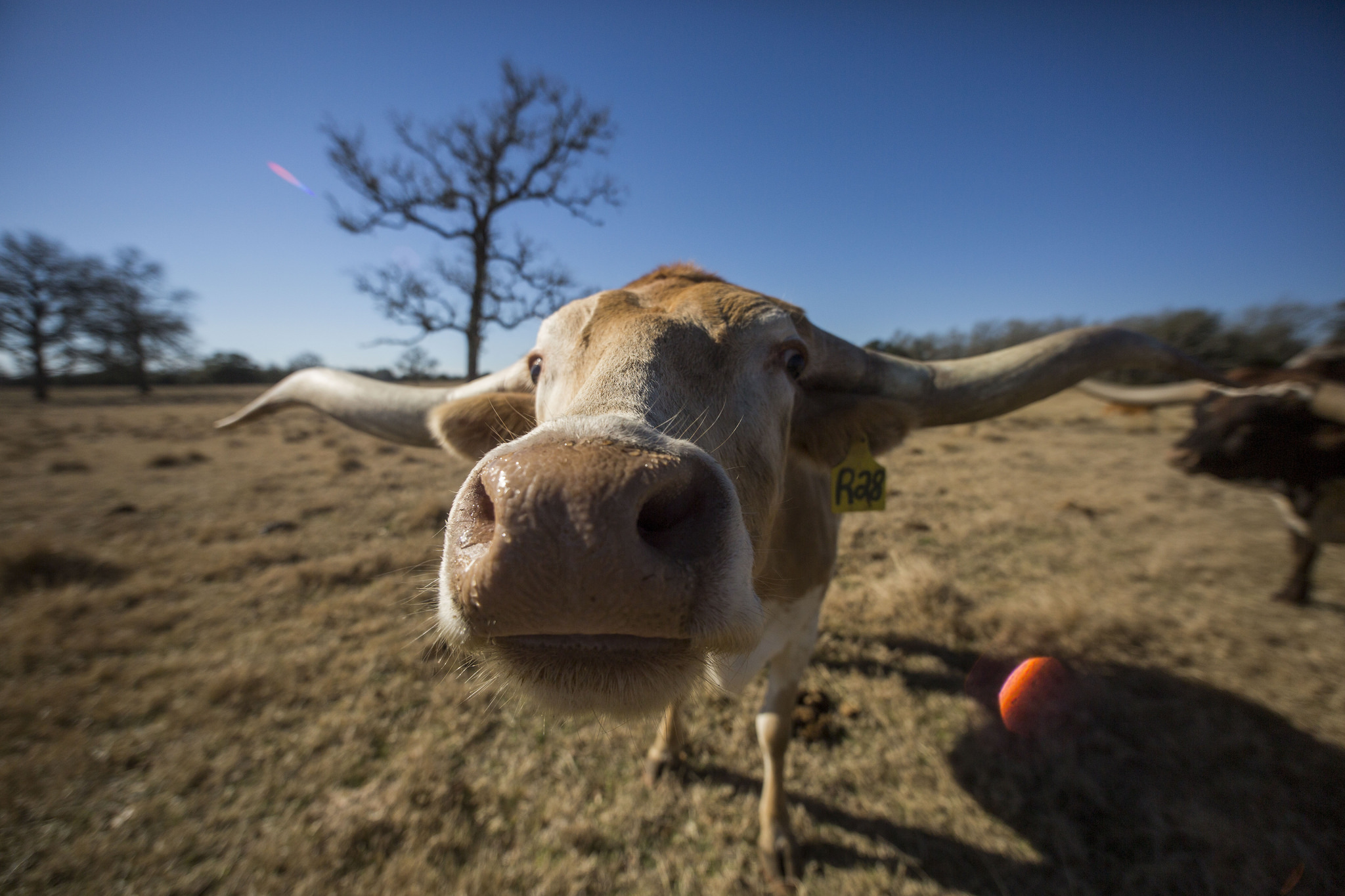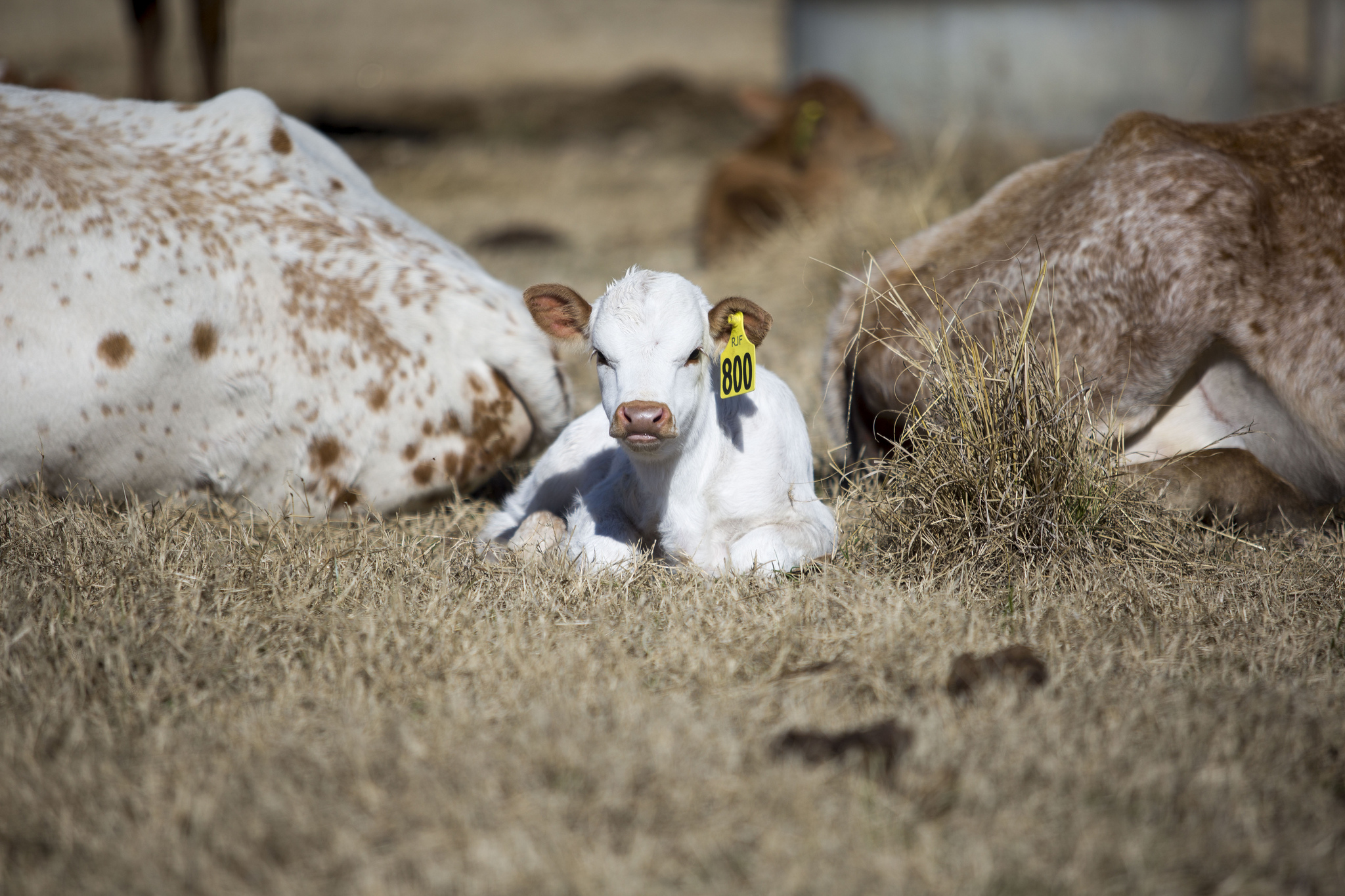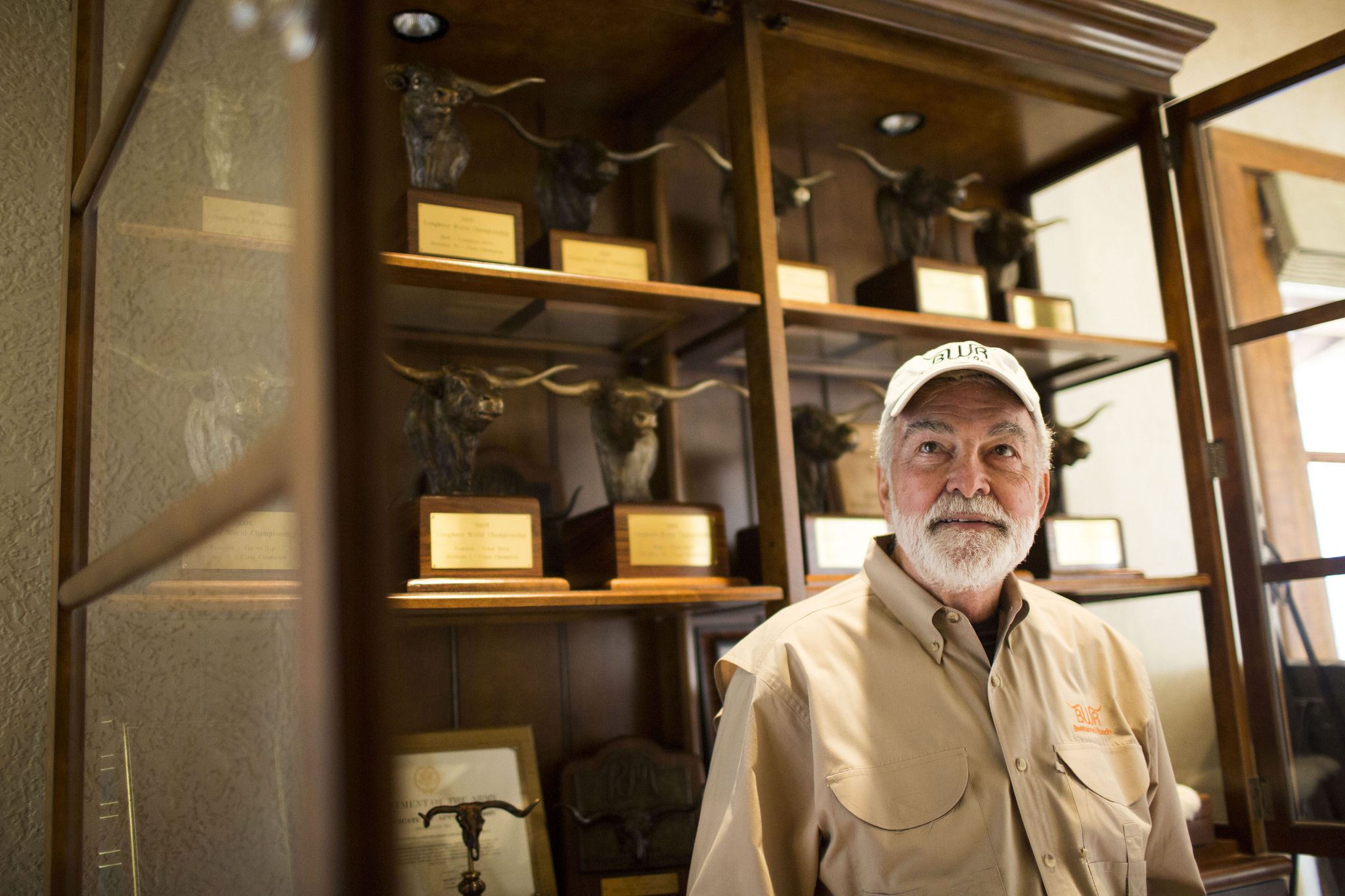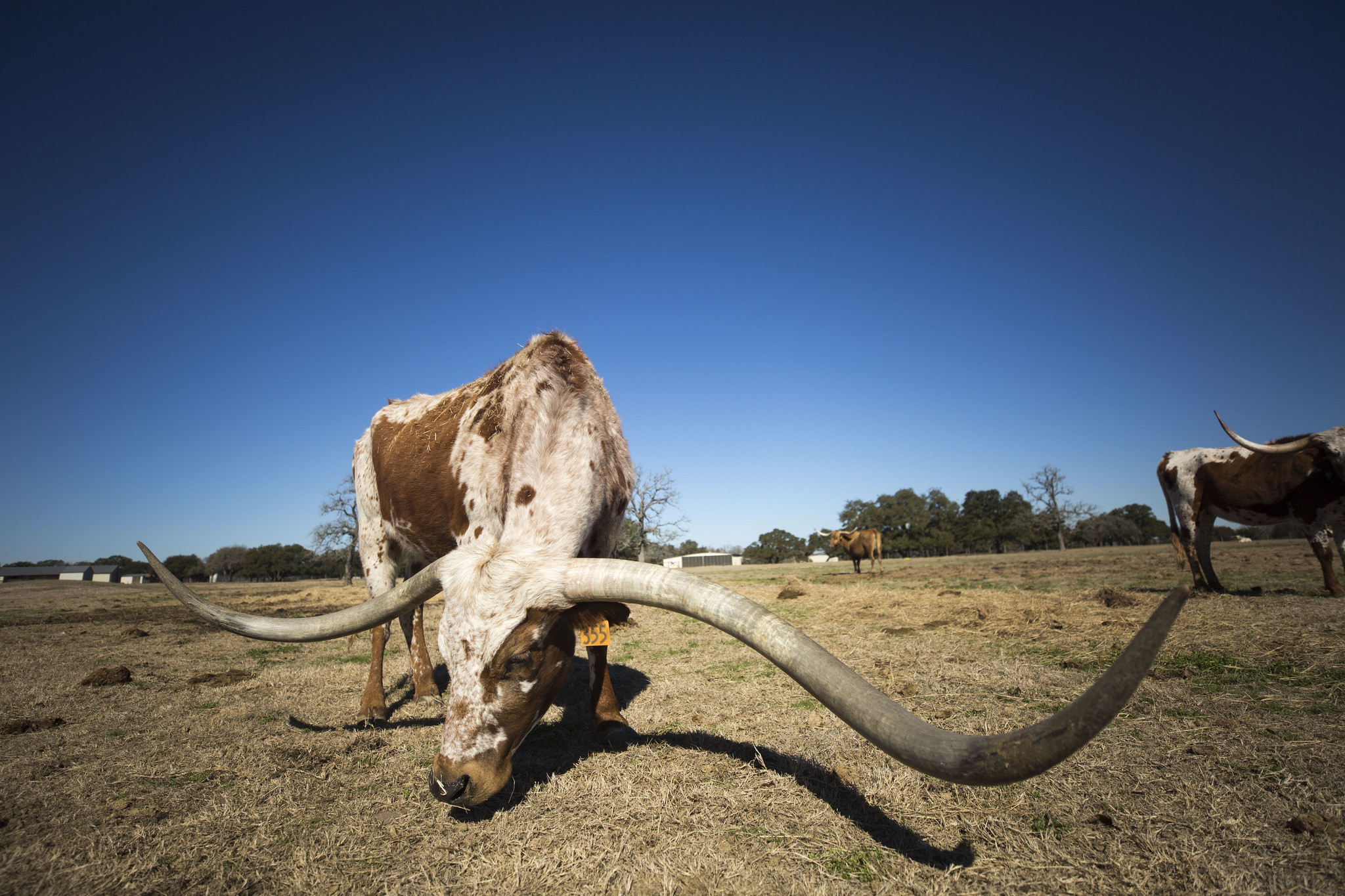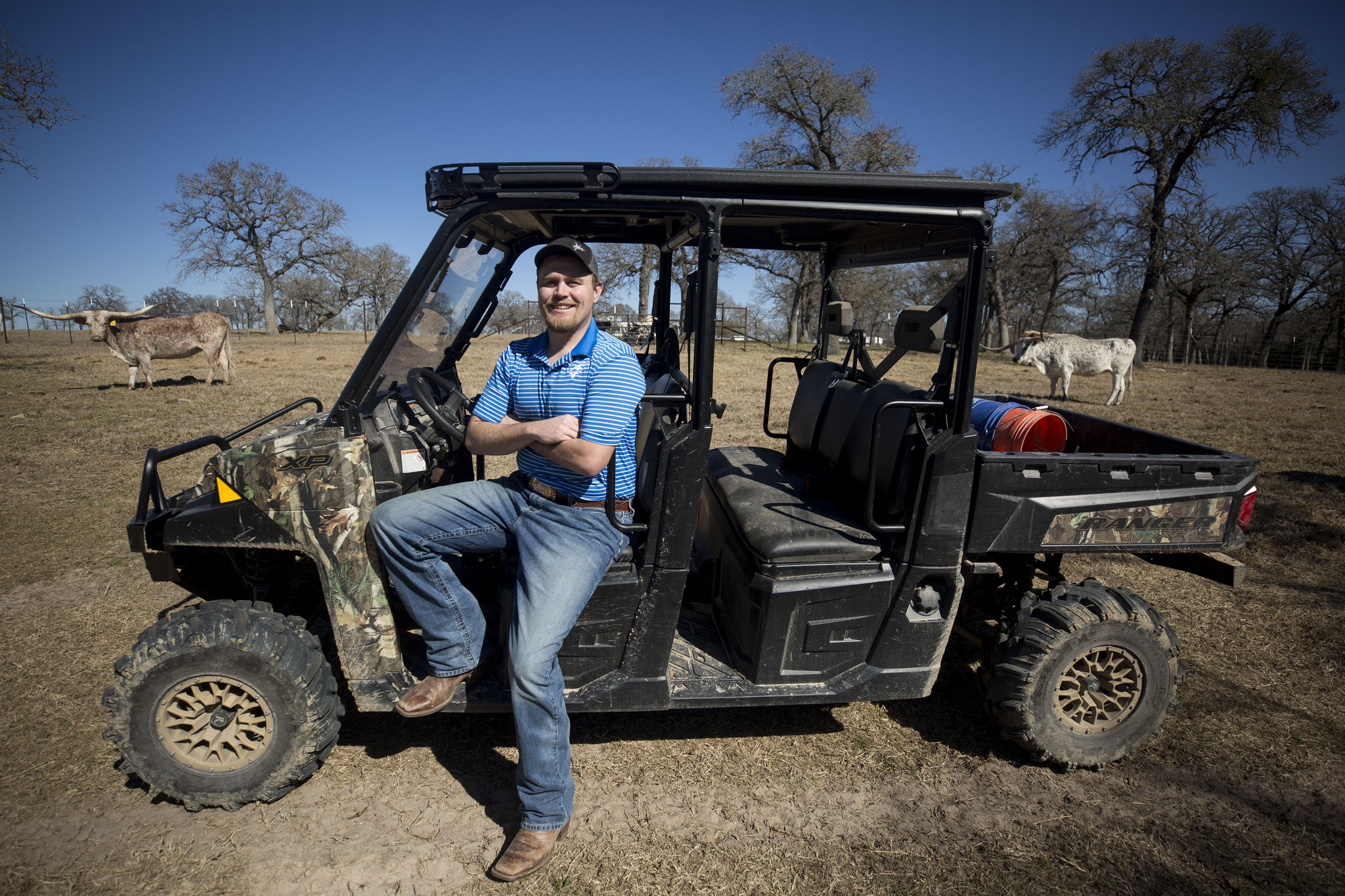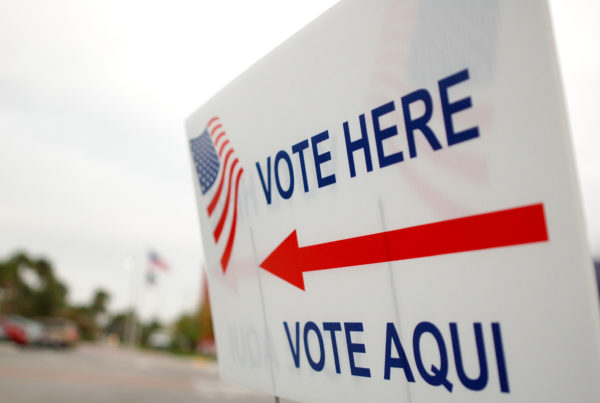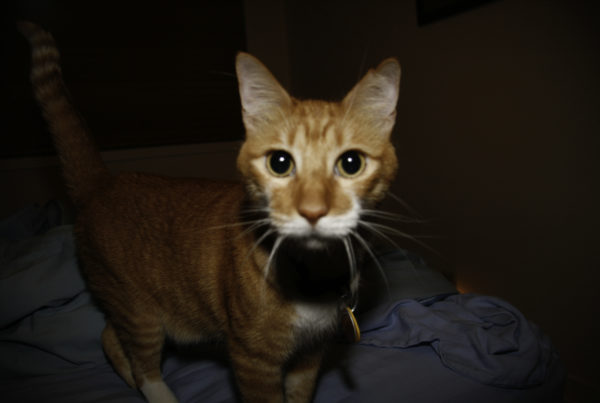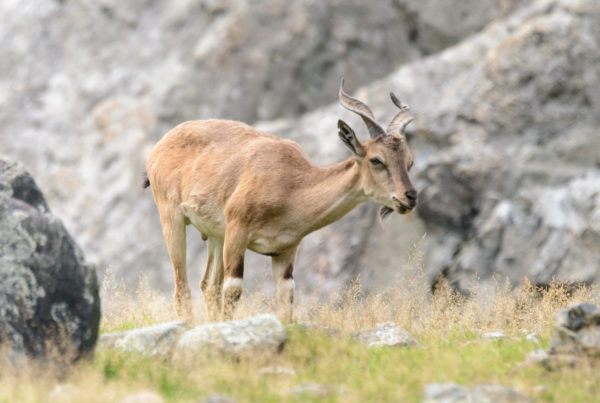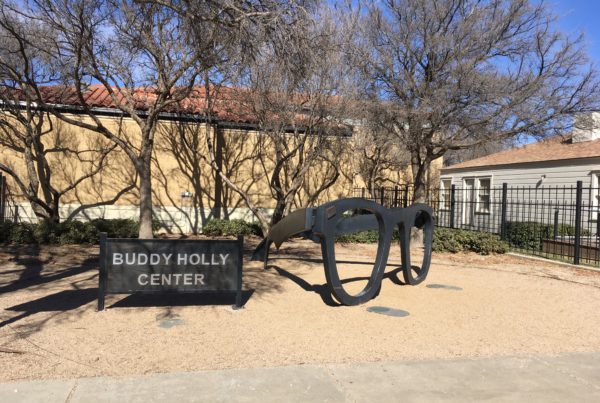In 1941, Texas folklorist J. Frank Dobie published “The Longhorns” – the definitive book on the quintessential Lone Star State livestock. Dobie was unsparing in his description of the breed, calling them bony, thin-flanked, some even grotesquely narrow-hipped, but also uniquely suited for the Texas terrain. They were built for survival, not show, which makes them quite different from their modern relatives.
On auction day for longhorns at the Fort Worth Stock Show and Rodeo – one of the biggest sales of the year – 85 or so cows are coaxed into a half-circle sale pen in front of the buyers and sellers. There are lots of cattle auctions at the stock show – Herefords, Brahman, Santa Gertrudis. And by and large, those look like a parade of the same animal over and over again.
But not the longhorns. Here, there’s something different for everyone. There are beefy chestnut-colored bulls, blue roan cows with parallel horns, fluffy, black-and-white calves with little spikes just starting to sprout. And these are not just any longhorns. These are registered longhorns, which means their bloodlines have carefully curated and logged.
Today, the average lot sells for just under $4,500, with the top cattle bringing in over $10,000 apiece. The buyers are mostly folks who got into this as hobby, but now are hooked.
“It’s a want-not-need market. They really don’t need these cows. They want them. They fall in love with these animals. They’re very addictive, they’re beautiful animals, they’re very docile animals,” says auctioneer Joel Lemley.
He breeds longhorns, too. He’s been doing it for about 25 years. If you ask him, or most anyone else in Fort Worth, how the industry has changed in that time, they’ll tell you the same thing. Take Dick Lowe of the Triple R Ranch in Horton, Michigan, or John Marshall, who raises longhorns at the Blue Ridge Ranch in Llano.
“When I got in,” Lowe says, “if you had a bull that had 60 inches of horn you were kicking butt. And today, if they’re not 60 by two, you throw them under the bus.”
Marshall agrees.
“When I got into this 10 years ago, if you had a cow in the 60s, tip-to-tip, it was a big deal,” he says. “All my cows are in the 70s or I don’t even have them anymore.”
In a short period of time, horn size for registered longhorns has grown exponentially, and so has the money it takes to buy them. Chase Vasut raises longhorns in Elgin and is the director of operations at the Texas Longhorn Cattle Association.
“When we got into the industry there was one cow who tip to tip measured 90 inches,” Vasut says, “and looking today there’s 55 of them.”
One of those sold last March at an auction put on by Vasut’s group. Bidding on one cow in particular got out of hand.
3S Danica was three years old at the time, with horns over 90 inches across – huge for any longhorn, much less a young one. The bids cleared $50,000, then 100, then 200, then 300, until finally 3S Danica sold for $380,000 – a record for a single longhorn.
The reason she was so expensive is that the buyers weren’t just after her, they were after her genetics, her future offspring. A cow so young with horns so long represents a giant leap forward in the never-ending race for the biggest horns. Bigger horns mean bigger bragging rights and bigger bucks.
But some folks in the business have started to wonder: how big is too big?
“You’ve put your finger on what is to me a very hot topic,” Marshall says.
“The original longhorn was a scrawny tough little survivor,” Marshall says. “At some point you’ve…they cease to be longhorns after a while, they get to be monsters,” says John Marshall of Llano.
A scrawny little survivor is not how you’d describe today’s animals, but that’s what they were. Their ancestors crossed the Atlantic with Christopher Columbus, and then fed friars and conquistadors at Spanish missions in the New World. Here and there they’d escape, and create fugitive populations in the south Texas scrub.
That’s where longhorns became longhorns. Centuries in the brush made them tough and wily, keener and more resilient than domestic cattle. In the mid-1900s, though, they became more valuable as pasture ornaments than as ribeyes. Technology like selective breeding, artificial insemination and in vitro fertilization followed. Since then, breeders have tried to win the horn race while maintaining the other qualities that set the breed apart. Some succeed, others don’t.
“Anytime that you chase after just one genetic, you’re going to have issues,” says Russell Fairchild, a longhorn consultant and breeder.
Heavy horns on a skinny body can wear down joints, and cause hooves to distort.
“You have one that’s broke down in the legs, she’s not going to continue to get pregnant. Means you don’t get as many calves, means you don’t get as much money on your investment,” Fairchild says.
This is about the health of individual cows, and maintaining the traits of a Texas icon.
Take horn shape, for example. It used to be unusual for horns to stick out horizontally. In Dobie’s 1941 book on the breed, he wrote that twists were characteristic of Texas horns.
Now the reverse is true. Horns that shoot straight out to maximize tip-to-tip length are more common. So now, this trait that was once a hallmark of the breed has become rare, and lately, more valuable as a consequence.
So breeders like Richard and Jeanne Filip are trying to bring that trait back into their herd. On their 240-acre ranch between San Antonio and Austin, the Filips are breeding for big horns, but also for classic, healthy traits.
“Just overall conformation, outstanding genetics they’re going to throw to their offspring,” Richard Filip says.
Richard drives me over to a pen with three heifers that are almost a year old. All three are daughters of the same cow, born within a week of each other through in vitro fertilization.
“But you can see this one’s got more horn again, her dam was bred to the 101-inch bull. So she’s already getting outstanding horn,” Filip says. “That’s twice as much horn as a heifer her size would normally have.”
The standout’s name is RJF Dreammaker. Her father is Cowboy Tuff Chex, a Guinness World Record holder for bull with the biggest horns. Dreammaker’s horns are only about 28 inches tip-to-tip. But if her parents are any indication, they’ll grow at least another 70 inches.
She’s the product of both living wild for centuries in the Texas scrub and the most advanced modern breeding – a top contender to lead the horn race for a while, and protect the other traits that make a longhorn a longhorn.


